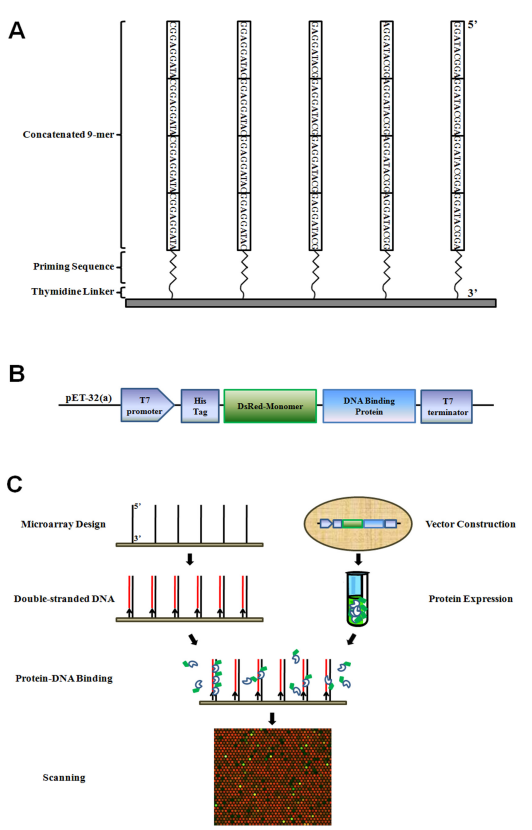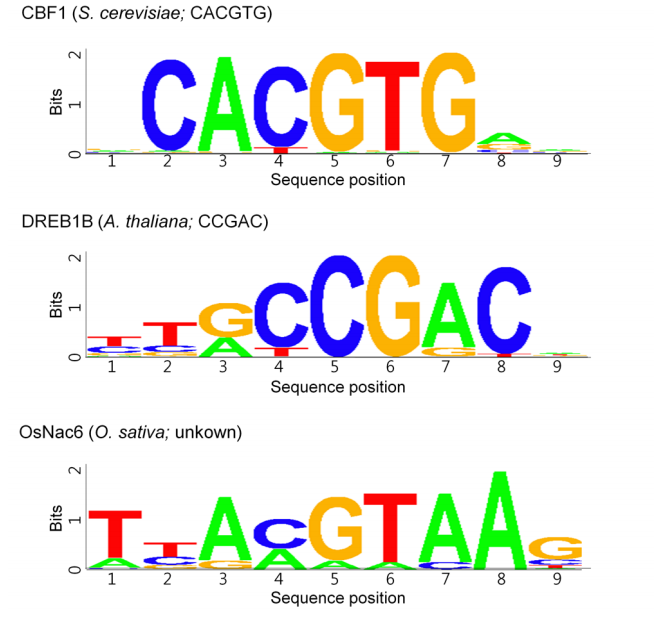

Quadruple 9-mer-based protein binding microarray with DsRed fusion protein
Min-Jeong Kim1,2, Tae-Ho Lee2, Yoon-Mok Pahk2,3, Yul-Ho Kim4, Hyang-
Mi Park4, Yang Do Choi1, Baek Hie Nahm2,3 and Yeon-Ki Kim2
Address: 1Department of Agricultural Biotechnology, Seoul National University, Seoul 151-921, Korea,2GreenGene Biotech Inc., Myongji
University, Yongin 449-728, Korea,3Division of Bioscience and Bioinformatics, Myongji University, Yongin 449-728, Korea,4National
Institute of Crop Science, Suwon 441-857, Korea
Abstract
Background
The interaction between a transcription factor and DNA motif (cis-acting element) is an important regulatory step in gene regulation.Comprehensive genome-wide methods have been developed to characterize protein-DNA interactions. Recently, the universal protein binding microarray (PBM) was introduced to determine if a DNA motif interacts with proteins in a genome-wide manner.
Results
We facilitated the PBM technology using a DsRed fluorescent protein and a concatenated sequence of oligonucleotides. The PBM was designed in such a way that target probes were synthesized as quadruples of all possible 9-mer combinations, permitting unequivocal interpretation of the cis-acting elements. The complimentary DNA strands of the features were synthesized with a primer and DNA polymerase on microarray slides. Proteins were labeled via N-terminal fusion with DsRed fluorescent protein, which circumvents the need for a multi-step incubation. The PBM presented herein confirmed the well-known DNA binding sequences of Cbf1 and CBF1/DREB1B, and it was also applied to elucidate the unidentified cis-acting element of the OsNAC6 rice transcription factor.
Conclusion
Our method demonstrated PBM can be conveniently performed by adopting: (1) quadruple 9-mers may increase protein-DNA binding interactions in the microarray, and (2) a one-step incubation shortens the wash and hybridization steps. This technology will facilitate greater understanding of genome-wide interactions between proteins and DNA.